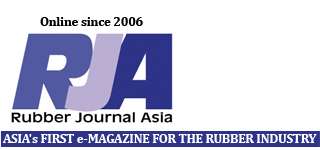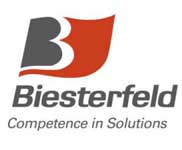Achieving greater sustainability while maintaining consistent quality and stable production costs is a challenge for the rubber industry – especially due to the central importance of fillers such as carbon black and silica.
With Hemplizit from Germany-based Solid Plant, a more sustainable alternative is now available. The purely plant-based, chemically unmodified product, made from hemp shives, can be integrated into existing rubber compounds such as butyl innerliner compounds (BIIR) and styrene-butadiene rubber (SBR).
Its use can reduce the proportion of carbon black or silica by up to 50%, thereby lowering the overall CO2 content without compromising the material’s technical properties.
German firm Biesterfeld Group says it holds the distribution rights in Europe.
Fillers such as carbon black significantly enhance the strength, durability and performance of many technical rubber products – and are difficult to replace. This is now possible with Hemplizit powder, made from industrial hemp shives, which is a pure natural product in compliance with the REACH regulation.
Its high hemicellulose content and the structured nature of the product improve its integration into the rubber matrix.
Which type of Hemplizit is best suited for an application depends on its specific surface area. It determines how well the filler bonds with the rubber matrix and how the strength and durability of the material changes.
The larger the specific surface area, the more contact points exist between the filler and the rubber: For HPE 30 this is 132-146 m2/g (BET according to ISO 9277). It can be used in proportions of 7-25 phr. HPE 50 has a specific surface area (BET according to ISO 9277) of 120-140 m2/g and can be used in proportions of 10-35 phr.
Tests show that Hemplizit HPE can be used flexibly, both as a proportionate substitute for carbon black and as a supplementary additive (on-top solution). In test mixtures such as BIIR innerliner mixtures, 10 phr of HPE 50 was used either as a replacement or in combination (on-top) with N660 carbon black.
Even when both approaches were combined (resulting in 20 phr), diffusion behaviour remained stable, despite slight reductions in tensile strength and elongation at break. Only minor increases in viscosity and hardness have to be accepted. Extended vulcanisation times can be offset by adjustments in the cross-linking system. In another test series using SBR compounds, replacing 10 phr of carbon blacks N330 and N550 led to improved abrasion resistance and slightly increased tear resistance, with almost unchanged physical and dynamic properties.
These benefits were also observed when used as an on-top addition, although increased viscosity, higher hardness and slight reductions in strength should be expected.
Possible applications include conveyor belts, tyre innerliners, shoe soles and seals.
Remzi Turhan, Head of the Research and Development Department at Solid Plant adds: “Sustainability was a key factor in the development of Hemplizit HPE. Hemp is not only a renewable resource, but also a natural soil purifier. Its ability to support phytoremediation, i.e. absorbing and binding pollutants in the soil, helps regenerate contaminated soils, while its low weight helps to reduce the overall mass of the end product. These unique properties convinced us to integrate hemp into Hemplizit for a lighter, more environmentally friendly material solution.”

